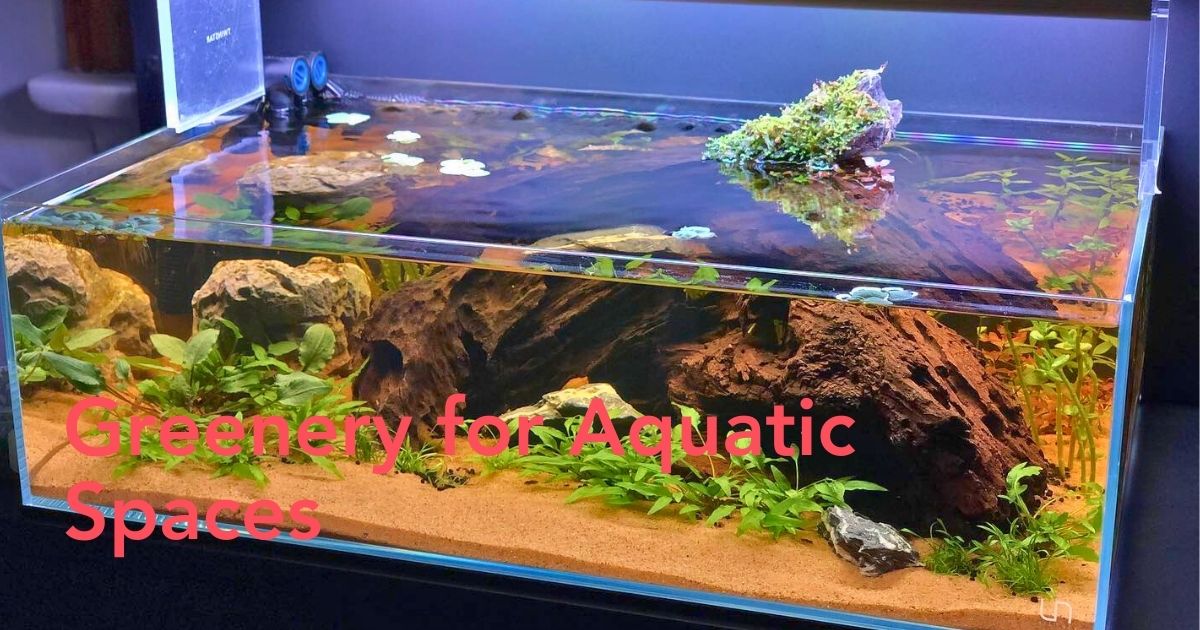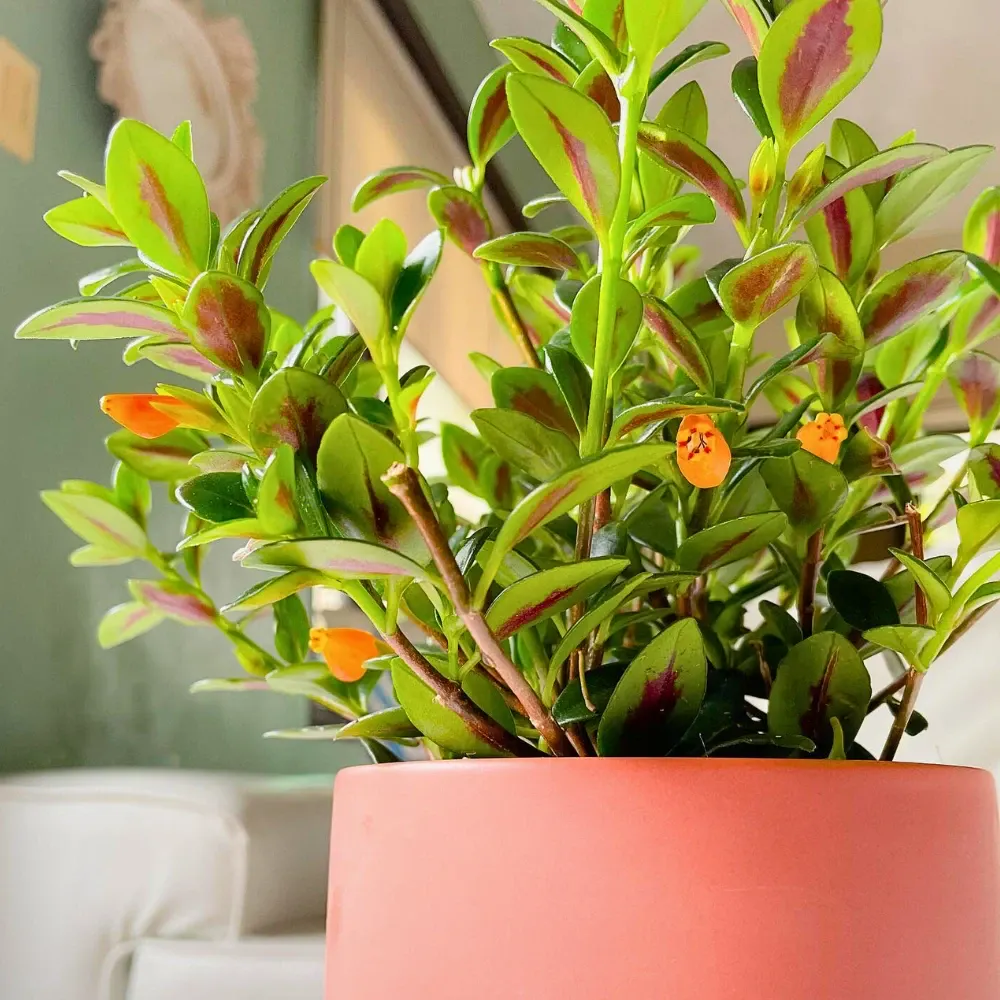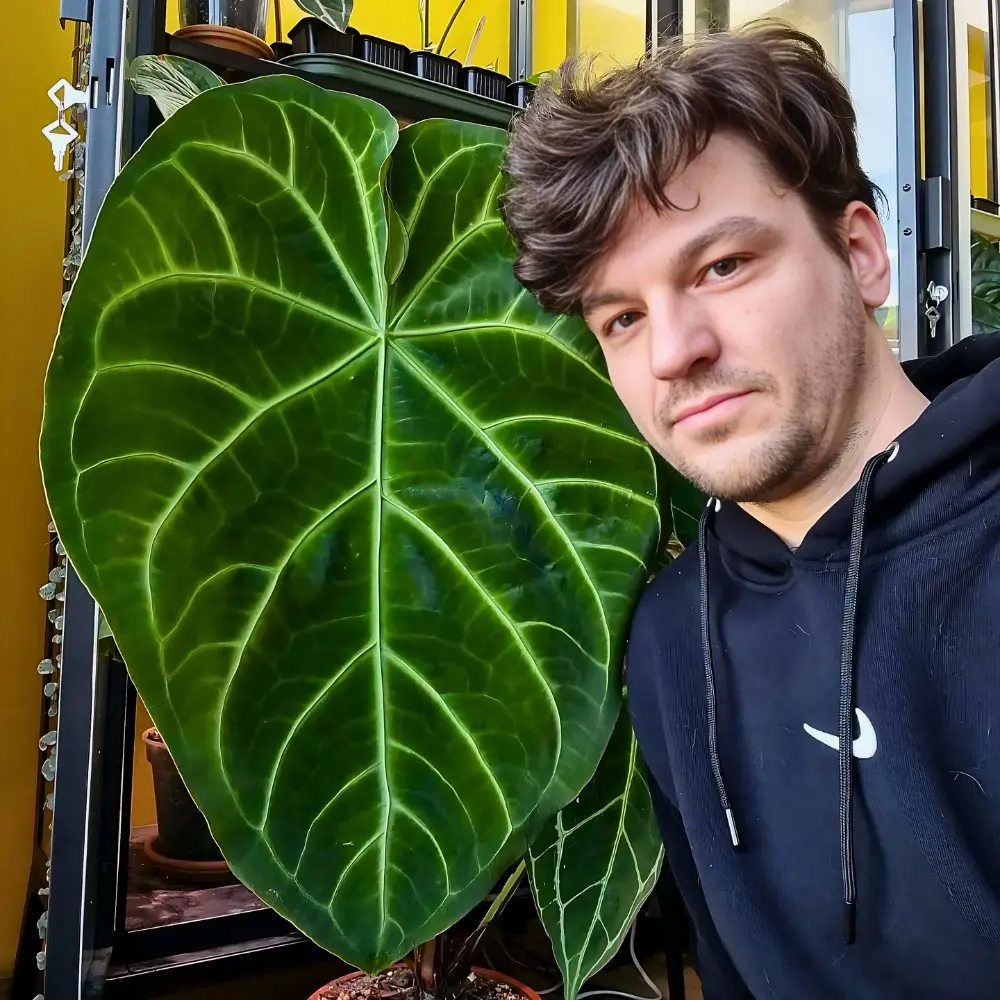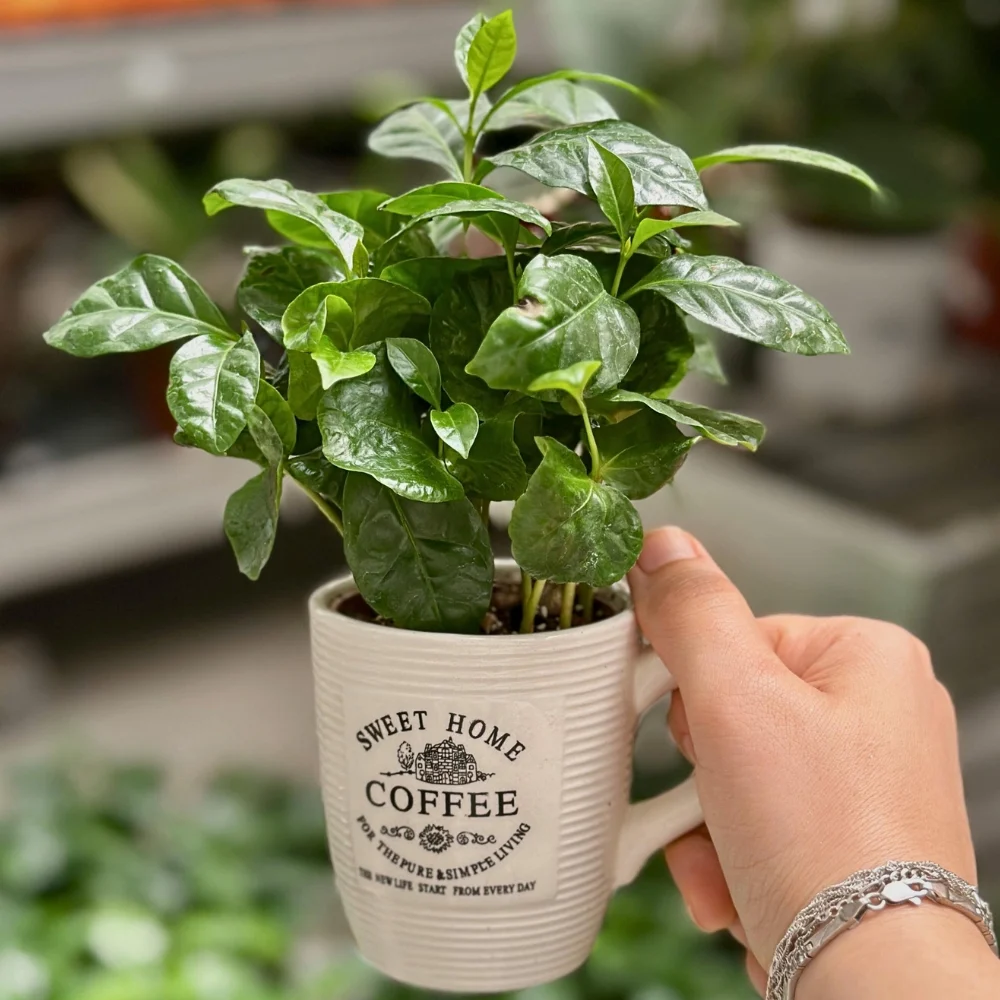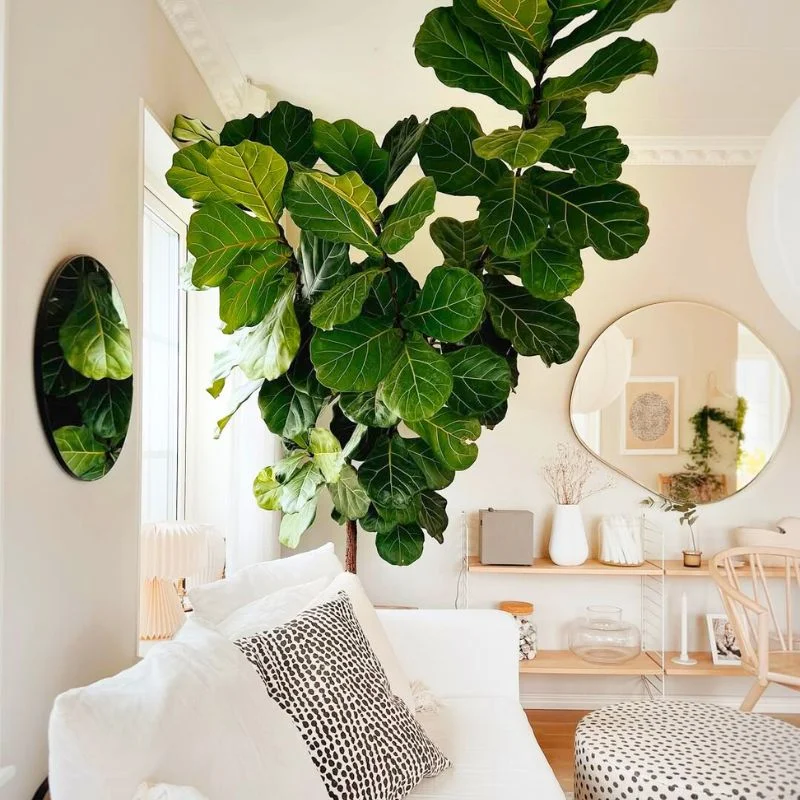A freshwater aquarium filled with live plants offers more than decoration. Aquarium plants bring balance to a tank, helping to oxygenate the water, absorb waste, and provide safe spaces for fish to shelter or reproduce. A tank with live greenery looks natural, but it also functions as a healthier ecosystem. The choice of plants depends on your goals: some species are almost effortless and suit beginners, while others demand precise care and patience. Whether you are looking for common aquarium plants to start with or more challenging tropical aquarium plants to master over time, knowing the different categories makes the journey smoother.
In this guide, we will explore popular aquarium plants that suit nearly every setup, easy aquarium plants that are best for beginners, and advanced species for aquarists ready for a challenge. Along the way, we will cover how to care for your underwater live plants for aquarium success, and why plants are an essential part of any freshwater system.
Popular Aquarium Plants for Any Tank
For those setting up a tank for the first time or upgrading an existing one, some plants stand out as popular aquarium plants across the world. They have earned this status because they adapt well to many setups, tolerate a range of conditions, and deliver a natural look that pleases both hobbyists and their fish. When people search for “pictures of aquatic plants” online, these species often appear among the first results because of how often they are grown.

One of the most recognized is the Marimo Moss Ball (Aegagropila linnaei). Despite its name, it is not technically moss but a ball-shaped form of green algae that naturally develops in lakes. Its soft, round structure makes it a visual novelty, while its resilience makes it a favorite for beginners. Rolling the ball gently during water changes ensures all sides receive light, helping it maintain its compact shape. These moss balls are also inexpensive, so many aquarists add several to their tanks for texture.

Another staple is the Amazon Sword (Echinodorus grisebachii), one of the best freshwater aquarium plants for filling the background of tanks. Its long leaves fan upward, creating a lush backdrop that fish can swim around or hide beneath. Amazon Swords grow best with nutrient-rich substrate and benefit from root fertilization. Given enough space and care, they grow into large specimens that may even produce offshoots, allowing hobbyists to share or replant them.

The Cryptocoryne wendtii, sometimes called Wendt’s Water Trumpet, is another plant seen in many common aquarium plant lists. Crypts are known for their ability to tolerate varied light conditions and substrates, which is why they are considered one of the most reliable aquarium plant names in the hobby. When first added to a tank, their leaves often “melt” and decay, but this is temporary. If left planted, new leaves grow adapted to the tank’s specific water chemistry.
Among stem plants, Bacopa caroliniana (Blue Water Hyssop) is a classic choice. It is widely appreciated for its upright growth and the way its green leaves sometimes take on a copper tone under stronger light. Bacopa grows well when trimmed regularly, and the cuttings can be replanted to produce a denser cluster.

Lastly, Christmas Moss (Vesicularia montagnei) is highly valued for breeding setups. It grows in soft, branching fronds that resemble miniature pine trees, making it perfect for fry and shrimp to hide within. Christmas Moss is slow to grow, but when attached to driftwood or rocks, it creates the look of an underwater forest.

Together, these five represent a name of 5 aquatic plants that are widely regarded as some of the most popular and best freshwater aquarium plants for a variety of tanks.
Easy Aquarium Plants for Beginners
For anyone new to the hobby, starting with low-maintenance plants is the best way to gain confidence. Easy aquarium plants tolerate mistakes, survive in basic setups, and still bring life to the tank. They are often mentioned when people search for “5 aquatic plant names” because they are hardy, accessible, and commonly sold in pet stores.
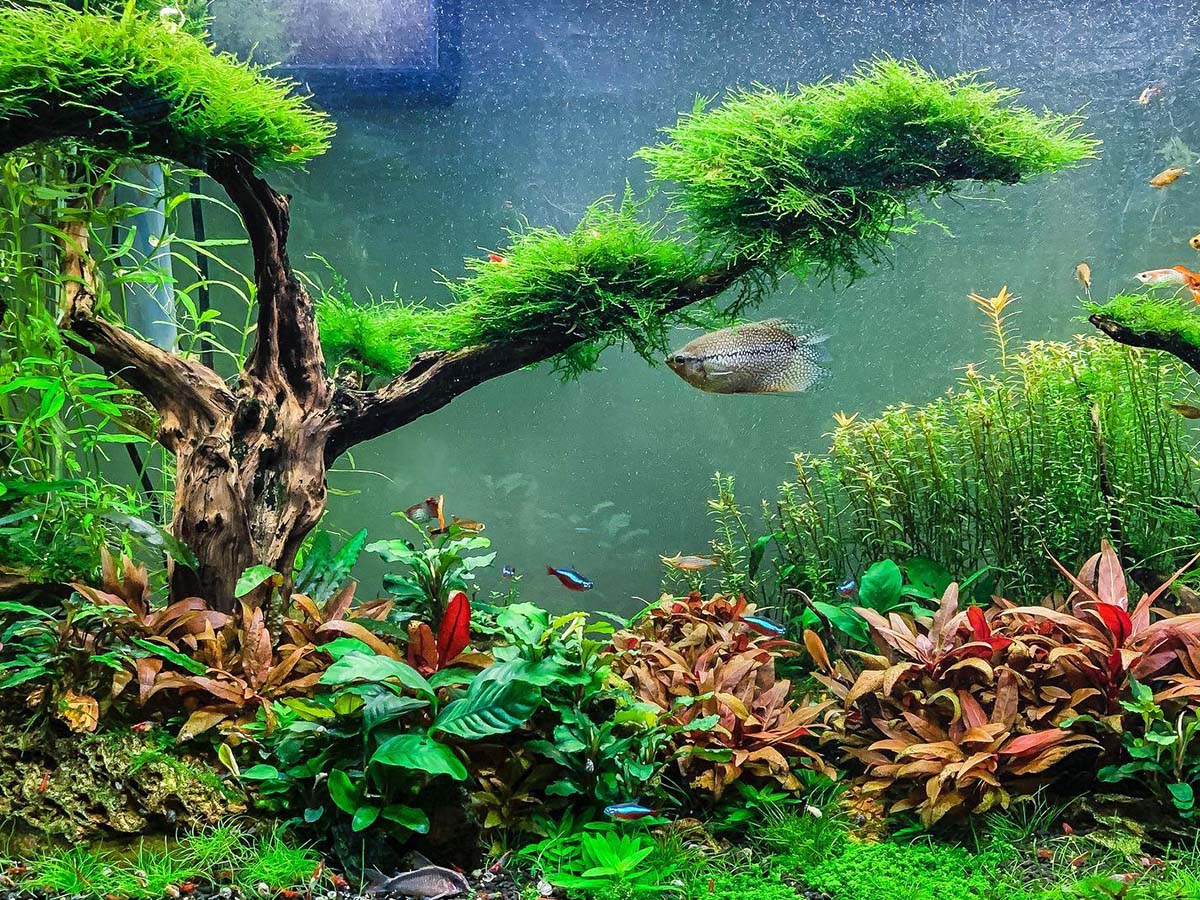
Java Moss (Vesicularia dubyana) is often the first plant recommended to beginners. It thrives in almost any conditions, growing on rocks, driftwood, or even left floating. Over time, it forms thick mats that fish and shrimp use for shelter. Because it asks for little more than clean water and stable light, Java Moss is one of the most common aquarium plants for novice keepers.
Another essential beginner species is Anubias. With its broad, sturdy leaves and slow growth, Anubias is nearly indestructible. It does well in low light and grows best when attached to wood or stone rather than buried in substrate. Its resilience and adaptability make it one of the best freshwater aquarium plants to recommend to first-time aquarists.

The Java Fern (Microsorum pteropus) is equally well-known. Like Anubias, it attaches to hardscape, and it is forgiving in low-light conditions. Java Fern’s textured leaves add character to aquascapes, and its ability to grow without special fertilization means it fits comfortably in low-tech tanks.

For a faster-growing option, Water Wisteria (Hygrophila difformis) offers a feathery appearance and rapid spread. Beginners appreciate it because it outcompetes algae by consuming excess nutrients. Its speed of growth also allows aquarists to experiment with trimming and replanting without fear of harming the plant.
Finally, Dwarf Sagittaria (Sagittaria subulata) is a simple grass-like plant that produces a natural carpet in tanks. It tolerates a wide range of conditions and spreads steadily through runners. Because it resembles underwater grasslands, it is often used in aquascapes for foreground coverage.

These five plants—Java Moss, Anubias, Java Fern, Water Wisteria, and Dwarf Sagittaria—form another clear list of 5 aquatic plant name choices that are perfect for beginners.
Advanced Aquarium Plants for Experienced Aquarists
For aquarists who enjoy precision and are willing to provide CO₂ injection, highlighting, and nutrient-rich substrates, advanced aquarium plants offer a rewarding challenge. These are the species that turn a tank into a showcase but demand consistent attention.

Hemianthus callitrichoides, often called Dwarf Baby Tears, is a carpeting plant that produces tiny, bright green leaves. It is famous for its beauty but also for its difficulty, as it requires strong lighting and added CO₂ to thrive. When maintained correctly, it creates a lush green carpet across the substrate, often used in aquascaping competitions.

Bucephalandra is another advanced option. This slow-growing tropical aquarium plant is prized for its unique leaf shapes and colors, sometimes showing metallic blue or purple tones. While it can survive in moderate setups, its true colors appear only with stable conditions and supplemental CO₂.
Rotala macrandra is a stem plant celebrated for its vibrant red leaves under proper conditions. It is less forgiving than beginner plants, requiring high light and fertilization. Aquarists often grow it in bunches at the back of a tank, where its color creates a striking contrast to green species.

The genus Eriocaulon includes delicate rosette plants that demand precise water quality. These plants grow slowly but are valued for their unusual forms, making them a centerpiece in advanced layouts.
Finally, Staurogyne repens is a versatile foreground or midground plant. It requires moderate to high light and looks best when kept compact through trimming. With enough care, it spreads into dense clusters, adding structure to aquascapes.

These advanced species demonstrate how live plants can push aquariums into an art form. They are not the most common aquarium plants, but are admired by experienced hobbyists for their difficulty and beauty.
How to Care for Aquarium Plants
Regardless of whether you choose beginner-friendly or advanced species, aquarium plant care follows the same principles. Plants need the right balance of light, nutrients, CO₂, and water quality.
Lighting is the first consideration. While some plants tolerate low light, most aquarium plants require moderate to high lighting to thrive. Research the specific needs of your chosen species, as too much light without nutrients can cause algae, while too little light may stunt growth.

Substrate plays a crucial role, particularly for rooted plants such as Amazon Swords and Cryptocorynes. Nutrient-rich aquarium soil supports long-term health, though root tabs can be added to standard gravel or sand. Floating plants and epiphytes like Anubias rely less on substrate, but still benefit from water-column fertilization.
CO₂ injection is not essential for every tank, but for tropical aquarium plants that demand fast growth, it makes a difference. Highlight setups with carpets and red stem plants almost always require it. In low-tech aquariums, liquid carbon supplements can offer some benefit.
Water quality should remain stable with regular changes to reduce nitrates and phosphates. Stability reduces stress on plants and prevents algae blooms. Keeping fast-growing species in the tank helps absorb excess nutrients.

Pruning and replanting are part of routine care. Stem plants like Bacopa and Rotala need trimming to stay bushy. Mosses may need to be thinned to avoid clogging filters. Foreground plants spread best when trimmed and replanted periodically.
Compatibility with tank mates also matters. Some fish uproot or nibble plants, while others rely on them for cover. When planning your setup, consider which fish species coexist peacefully with live plants.
Why Aquarium Plants Are Essential
Live plants are not just decorative. They perform critical roles in the health of freshwater systems. Through photosynthesis, plants release oxygen, which fish depend on. They also absorb waste products such as ammonia, nitrates, and phosphates, acting as natural filters. This dual role makes them vital for maintaining water quality.
Plants also enrich fish behavior. Many species use them for spawning, hiding, or grazing. A tank with plants supports natural behaviors that reduce stress and create a healthier environment. For aquarists, live plants add depth, texture, and movement that artificial decorations cannot replicate.

Whether you choose common aquarium plants for ease or tropical aquarium plants for advanced layouts, they build biodiversity and balance. Underwater live plants for aquarium setups transform tanks from simple containers of water into miniature ecosystems.
Selecting aquarium plants depends on your goals, experience, and willingness to invest in care. Popular aquarium plants like Amazon Swords and Cryptocorynes are suitable for most tanks. Easy aquarium plants such as Java Moss and Anubias give beginners confidence. Advanced aquarists may experiment with Dwarf Baby Tears or Rotala for vibrant, high-tech layouts.

No matter the choice, live plants bring essential benefits to aquariums, from oxygenation to filtration and behavioral enrichment. With careful planning and patience, they create tanks that are not just visually appealing but also balanced, thriving ecosystems. When considering aquarium plant names and pictures of aquatic plants, it becomes clear that each species has its place in the hobby—whether as a starter plant for newcomers or a prized specimen in an aquascaper’s collection.
Header by @Aurora Nature Aquariums.

